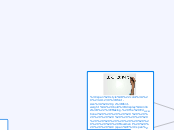Making. The Educational Movement Process of creating something (Hsu, Baldwin and Ching, 2017).
Experimentation/Transformational Learning "Although this approach is expensive, it may be worth it because the students are engaged in a transformational style of learning, and I immediately thought of how it could be used practically for language learning or tourism. The magnitude of which is only dependent on how far I or students can stretch their imagination and test their limits." Jon Thomas (2018).
Creativity

Collaboration with All Stakeholders
Universal Design https://www.youtube.com/watch?time_continue=20&v=bDvKnY0g6e4
Teachers
Pedagogy
Parents
Students
Adults/Post Secondary
K-12 Education
Public Institutions
Community
Opportunity
Occupation
Consulting
Support
Expertise
Economic Growth
Entrepreneurship
Education

Solving Real World Problems
Meaningful Learning
Facilitated Learning
Situated Learning
Art
Hands on Learning "The things I know, really know are things that I have done. Not read, studied, tested. Done." Wayland Dickson (2018).
Colaborative Learning
Project-Based Learning

Instructional Design
Cross Discipline Potential
Non-traditional classroom
Teacher Creativity
Math/Physics/Engineering "As a math teacher, something I’ve heard talked about is the idea of having students embrace a growth mindset, essentially, that students aren’t simply “math people” or they are; failure is an experience to be learned from and not simply forgotten as soon as they arrive at the proper solution. Students grow into problem solvers in a mathematics classroom and in a Makerspace the same holds true." Mark Antle (2018).

Educational Technology

Trades
Processes "Makerspaces show children what makes technology work. It gets them thinking about process."(Pitts, 2018).
Augmented Learning
Limitations
Physical Space
Teacher Training
Budgets
Accessibility
Resources
Teacher Interest
Subject Knowledge
Safety
Curriculum
Real Life Experiences
Learning Styles/Preferences
Flipping the Classroom Upside Down
Non-Science Based Curriculum
ELA
Communication Skills
Social Studies
Understanding of Society
